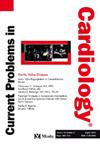线粒体钙稳态与心房颤动:机制和治疗策略综述。
IF 3
3区 医学
Q2 CARDIAC & CARDIOVASCULAR SYSTEMS
引用次数: 0
摘要
心房颤动(AF)与线粒体功能障碍、钙(Ca 2 +)失衡和氧化应激密切相关。线粒体ca2 +对于调节代谢酶、维持三羧酸(TCA)循环、支持电子传递链(ETC)和产生ATP至关重要。此外,Ca 2 +通过调节抗氧化酶和活性氧(ROS)清除来调节氧化平衡。然而,ca2 +的稳态破坏,特别是超载,会导致ROS产生过多,线粒体通透性过渡孔(mPTP)打开,以及氧化应激诱导的损伤。这些变化导致线粒体功能障碍、ca2 +渗漏和心肌细胞凋亡,驱动房颤进展和心房重构。在治疗上,针对线粒体Ca 2 +的稳态显示出减轻AF的希望。适度的Ca 2 +调节可以增强能量代谢,稳定线粒体膜电位,并通过上调超氧化物歧化酶和谷胱甘肽过氧化物酶等酶来增强抗氧化防御。这减少了ROS的产生并促进了清除。适当的Ca 2 +水平还可以防止电子泄漏,促进线粒体自噬,帮助受损线粒体的清除,减少ROS的积累。未来的策略包括调节Ryanodine受体2 (RyR2)、线粒体钙单转运体(MCU)和钠钙交换器(NCLX)来控制Ca 2 +过载和氧化损伤。解决线粒体ca2 +动力学问题为打破ca2 +过载、氧化应激和房颤进展的循环提供了一种令人信服的方法。需要进一步的研究来阐明线粒体ca2 +的调节机制及其在房颤发病中的作用。这些知识将指导创新治疗的发展,以改善房颤患者的预后和生活质量。本文章由计算机程序翻译,如有差异,请以英文原文为准。
Mitochondrial calcium homeostasis and atrial fibrillation: Mechanisms and therapeutic strategies review
Atrial fibrillation (AF) is tightly linked to mitochondrial dysfunction, calcium (Ca²⁺) imbalance, and oxidative stress. Mitochondrial Ca²⁺ is essential for regulating metabolic enzymes, maintaining the tricarboxylic acid (TCA) cycle, supporting the electron transport chain (ETC), and producing ATP. Additionally, Ca²⁺ modulates oxidative balance by regulating antioxidant enzymes and reactive oxygen species (ROS) clearance. However, Ca²⁺ homeostasis disruptions, particularly overload, result in excessive ROS production, mitochondrial permeability transition pore (mPTP) opening, and oxidative stress-induced damage. These changes lead to mitochondrial dysfunction, Ca²⁺ leakage, and cardiomyocyte apoptosis, driving AF progression and atrial remodeling. Therapeutically, targeting mitochondrial Ca²⁺ homeostasis shows promise in mitigating AF. Moderate Ca²⁺ regulation enhances energy metabolism, stabilizes mitochondrial membrane potential, and bolsters antioxidant defenses by upregulating enzymes like superoxide dismutase and glutathione peroxidase. This reduces ROS generation and facilitates clearance. Proper Ca²⁺ levels also prevent electron leakage and promote mitophagy, aiding in damaged mitochondria removal and reducing ROS accumulation. Future strategies include modulating Ryanodine receptor 2 (RyR2), mitochondrial calcium uniporter (MCU), and sodium-calcium exchanger (NCLX) to control Ca²⁺ overload and oxidative damage. Addressing mitochondrial Ca²⁺ dynamics offers a compelling approach to breaking the cycle of Ca²⁺ overload, oxidative stress, and AF progression. Further research is needed to clarify the mechanisms of mitochondrial Ca²⁺ regulation and its role in AF pathogenesis. This knowledge will guide the development of innovative treatments to improve outcomes and quality of life for AF patients.
求助全文
通过发布文献求助,成功后即可免费获取论文全文。
去求助
来源期刊

Current Problems in Cardiology
医学-心血管系统
CiteScore
4.80
自引率
2.40%
发文量
392
审稿时长
6 days
期刊介绍:
Under the editorial leadership of noted cardiologist Dr. Hector O. Ventura, Current Problems in Cardiology provides focused, comprehensive coverage of important clinical topics in cardiology. Each monthly issues, addresses a selected clinical problem or condition, including pathophysiology, invasive and noninvasive diagnosis, drug therapy, surgical management, and rehabilitation; or explores the clinical applications of a diagnostic modality or a particular category of drugs. Critical commentary from the distinguished editorial board accompanies each monograph, providing readers with additional insights. An extensive bibliography in each issue saves hours of library research.
 求助内容:
求助内容: 应助结果提醒方式:
应助结果提醒方式:


